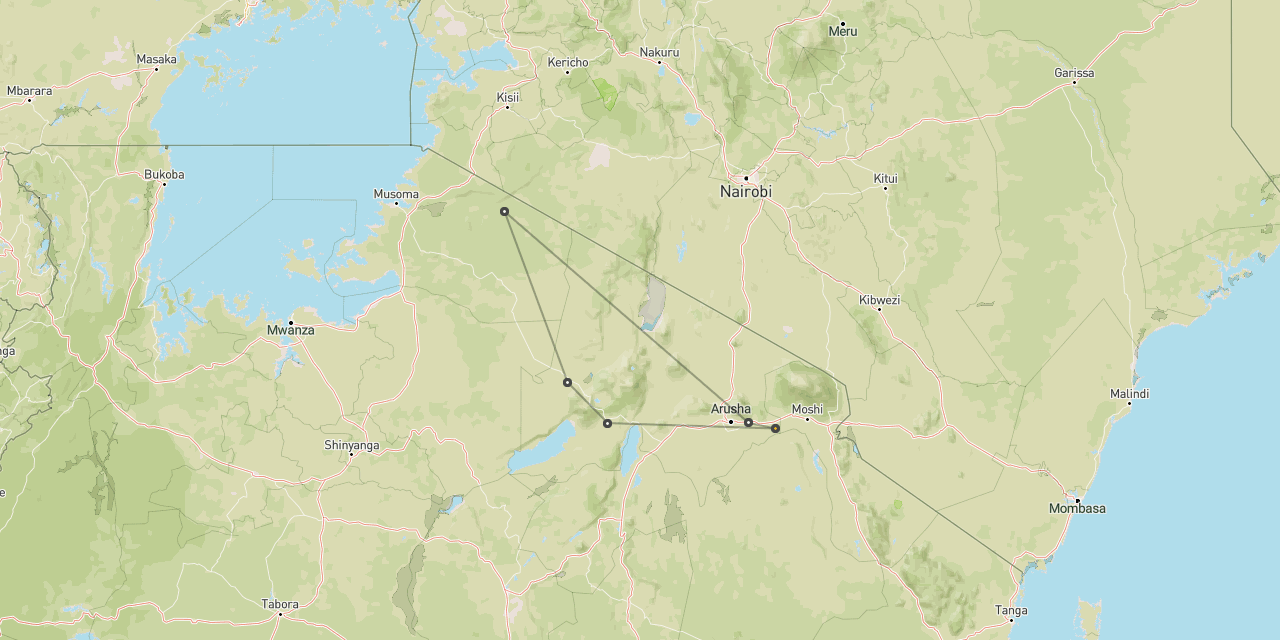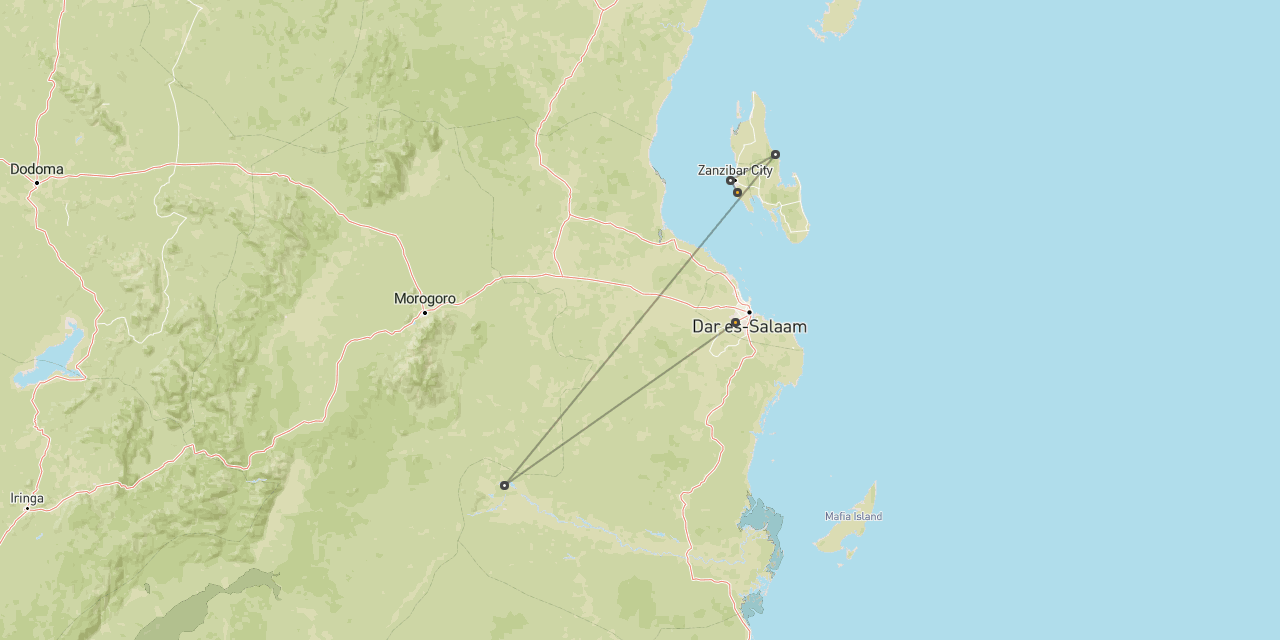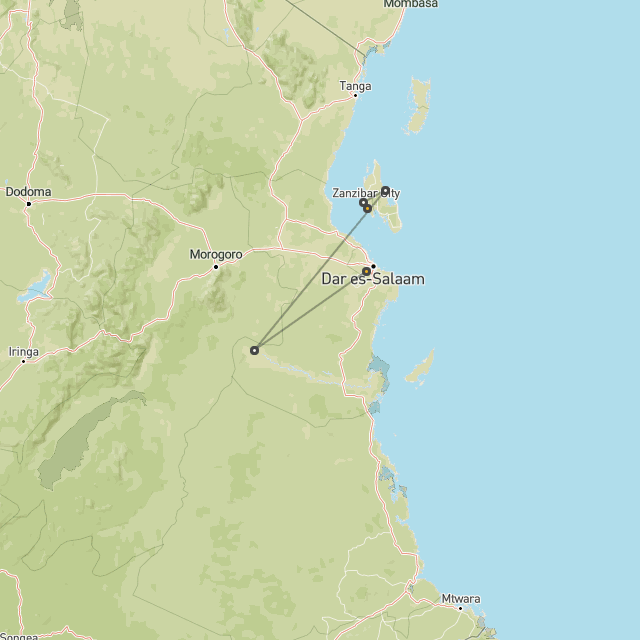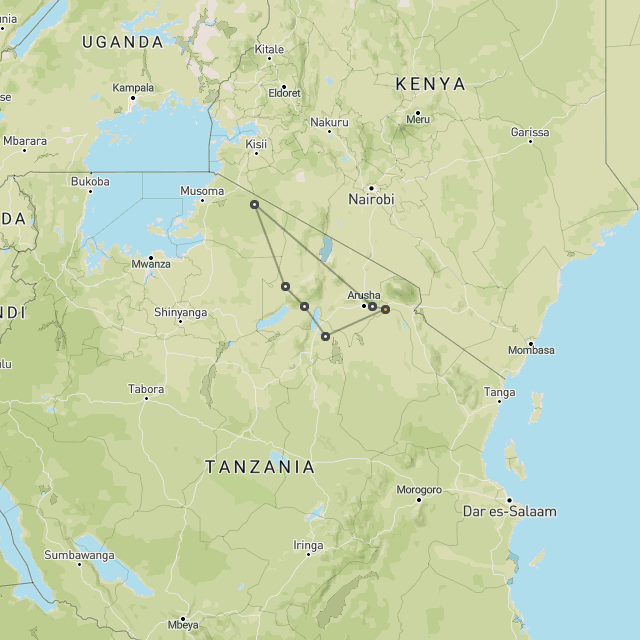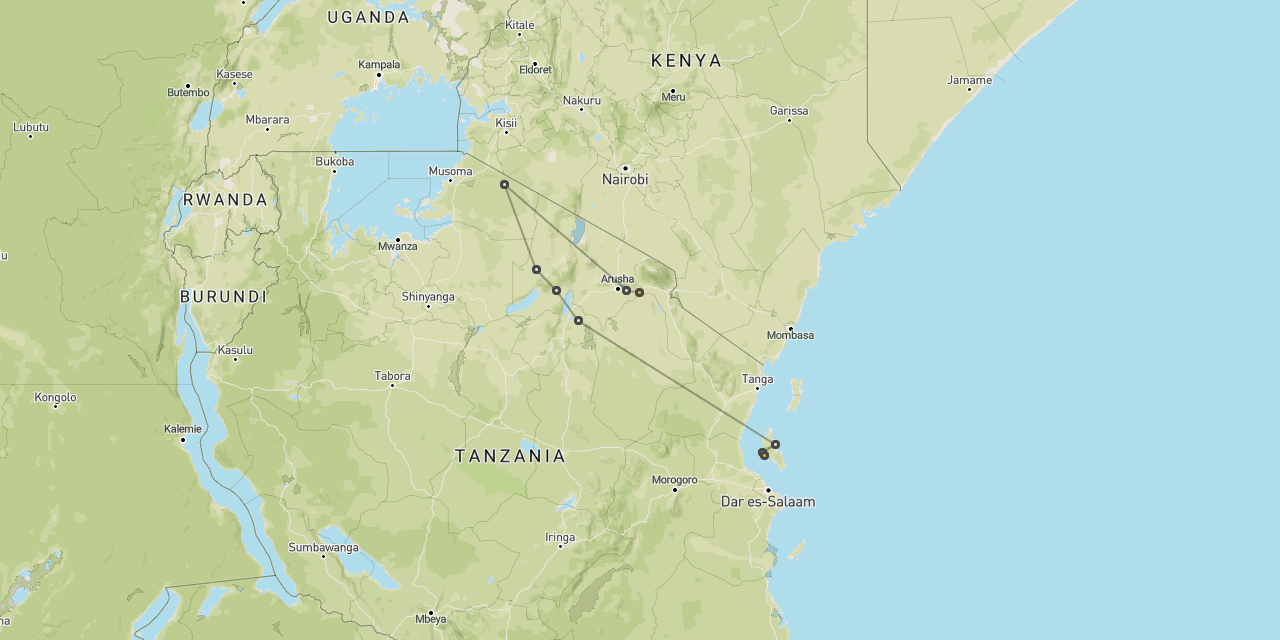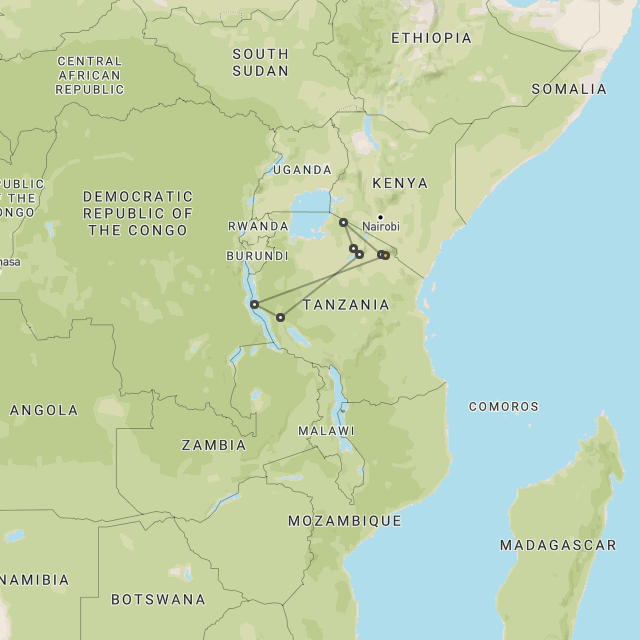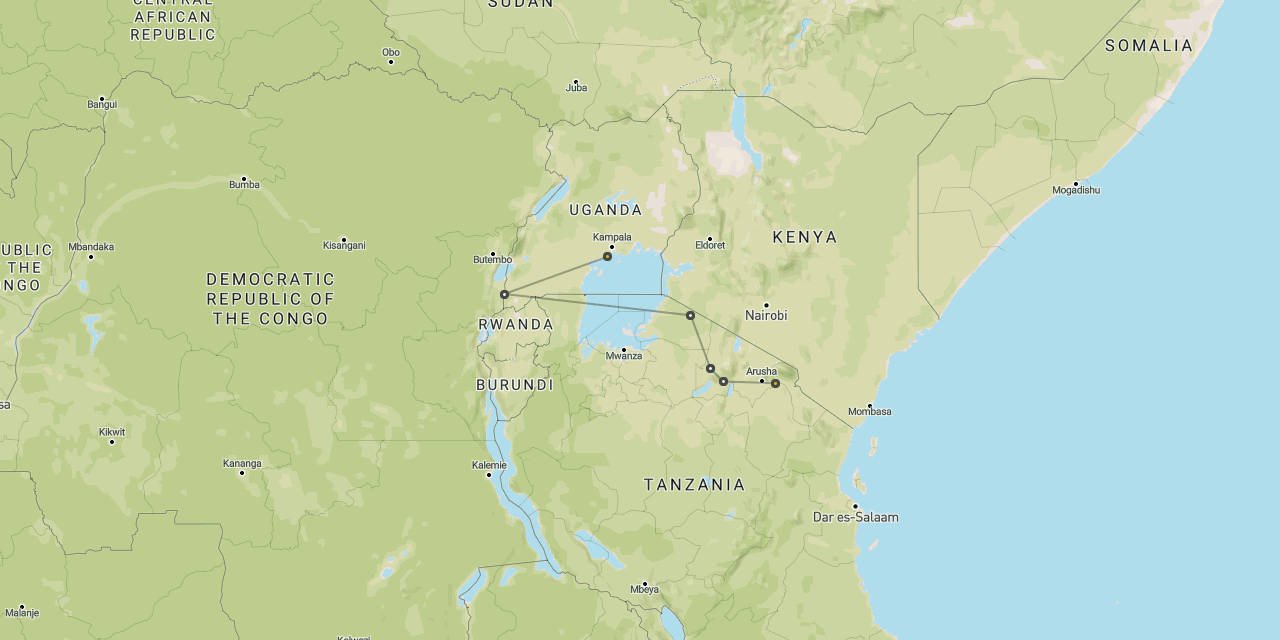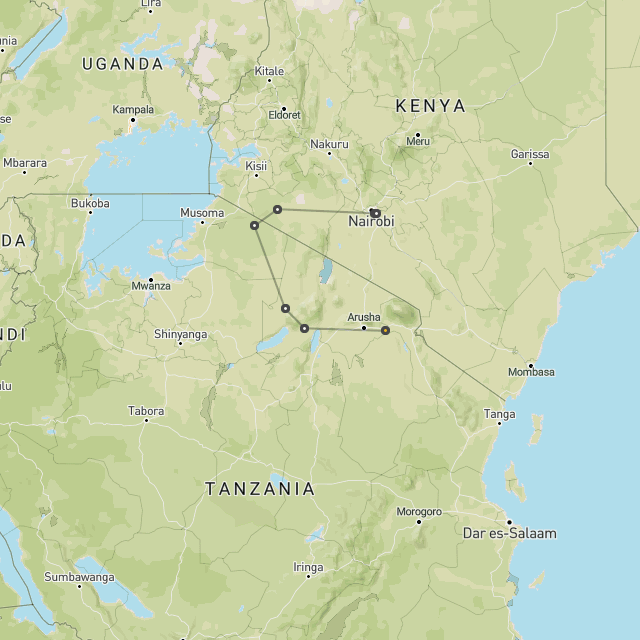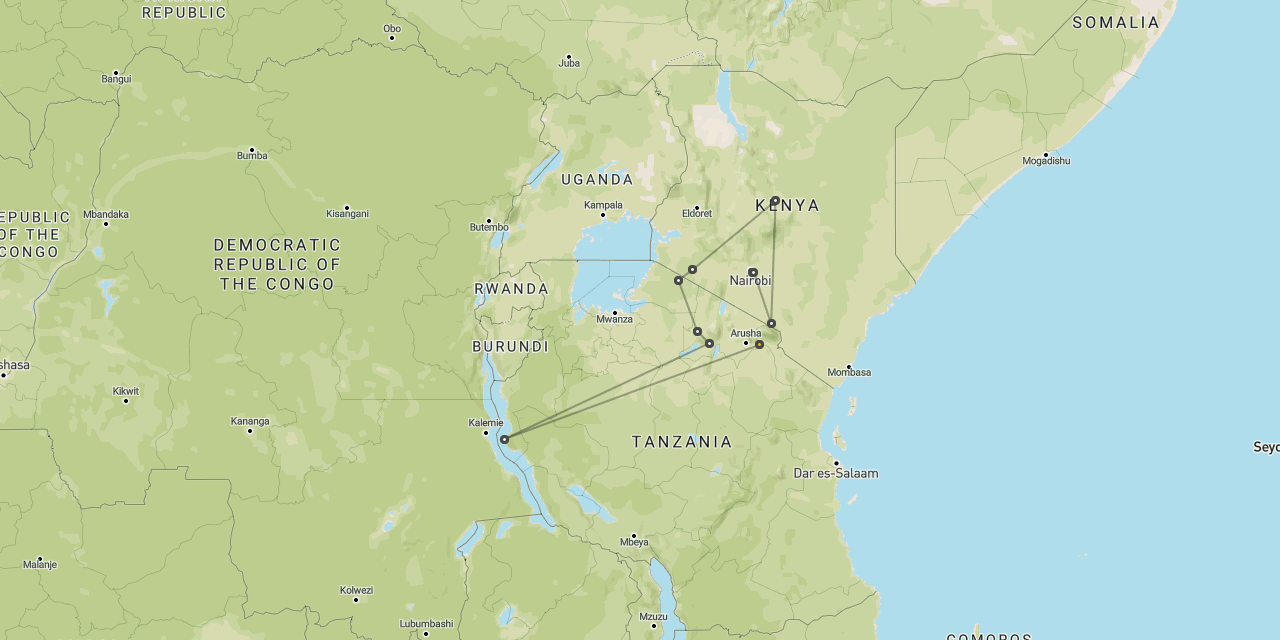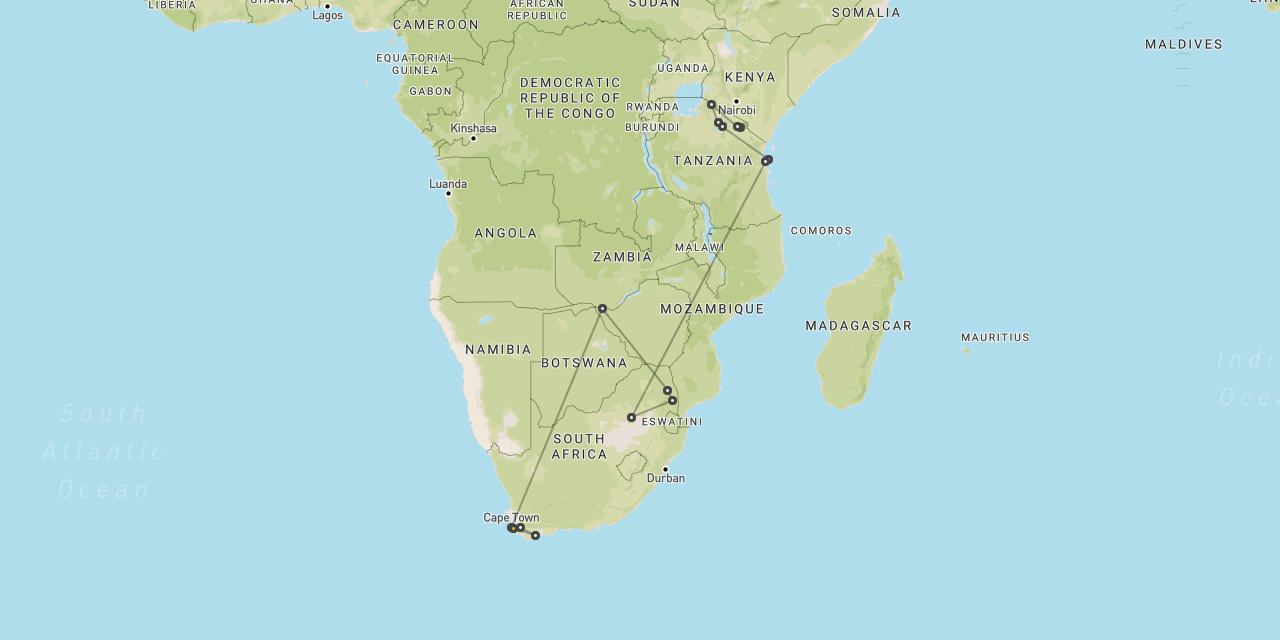
The geography and wildlife of Tarangire
Tarangire
is centred on a critically
important perennial river

The geography of Tarangire
the beating heart of a very large conservation area
At 2850 square kilometres, Tarangire is a substantial national park, lying at the heart of a vast conservation area of around 20,000 square kilometres which extends northwards past Lake Manyara and on to Lake Natron and the border with Kenya.
The reserve itself is critical to this ecosystem because it contains a number of permanent year-round water sources. The most significant of these is the Tarangire River itself, which arises at the foot of the nearby rift escarpment, flows out into the park and then evaporates from its terminus at Lake Burungi on the western border of the reserve.
The landscapes are largely comprised of gently undulating wooded hills, interspersed by the occasional hill or kopje.
The northern sector of the park contains many superb baobab trees, some of which are reckoned to be more than 2000 years old. One particular specimen of note is the well known Poacher’s Baobab, whose hollow trunk reputedly provided shelter for hunters right up to the gazetting of the park. Let your guide go in first as a local leopard is sometimes found inside.

The wildlife of Tarangire
a huge inward migration during Jun-Oct
The main wildlife feature in Tarangire is the seasonal migration, involving around 250,000 large mammals including giraffes, buffaloes, oryx, ostriches and lions.
During the Jun-Nov dry season animals migrate in towards the Tarangire River, where they congregate in great numbers. The wildlife viewing can be extremely strong.
During the converse Dec-May green season, the animals disperse into the vast hinterland and are much more difficult to find. Although this in and out movement is common between species, different animals tend to move on different routes at different times. Wildebeest and zebras mainly move northwards towards Lake Manyara and on towards Lake Natron. The main bulk of the wildlife, including buffaloes, gazelles, elephants, kongonis, elands and oryx move out onto the plains to the east and southeast. Other herds of wildebeest, zebras, buffaloes and elands also move in a more southerly direction.
The most significant component of this migration is the elephant population, which is thought to now involve 5000 to 10000 animals. We have personally counted over 1000 elephants in a single day, in a mix of breeding and bachelor herds.
Resident species which remain within the park throughout the year include lions, leopards, cheetahs, waterbucks, impalas, warthogs, dikdiks, giraffes and lesser kudus.
There are also chances for some particularly unusual animal sightings here, such as the enormous African pythons that hang out in the trees around Silale Swamps.
This is also the only part of the northern parks where you might see greater kudus, fringe-eared oryx, bohor reedbucks and gerenuks.

let us know your thoughts about Tanzania
and we will help you create the perfect trip

Extraordinary tailor-made adventures,
from earthy and edgy to easy and extravagant
From around USD 2500 per person, you set the ceiling
Sample Trips
Here are some of our popular trip shapes

Get started on your trip
It’s never too soon to get in touch, we are here to help with every stage of your planning.
Best Lodges
We regularly inspect and photograph all of the the best lodges, to ensure that we always recommend the most suitable options
Key Locations
Take a look around related locations. Click ‘View more’ to explore locations further afield.
Where Next?
Where Next?
We offer trips to dozens of fabulous countries.
Might one of these might be your next great adventure?

Please rotate your screen.
